GP- oral cavity, salivation, dysphagia
1/139
There's no tags or description
Looks like no tags are added yet.
Name | Mastery | Learn | Test | Matching | Spaced |
|---|
No study sessions yet.
140 Terms
1. prehension
2. insalivation
3. mastication
4. swallowing
5. digestion
6. absorption
7. excretion
what are the 7 stages of digestion?
the grasping of food with the tongue (carnivores and cows) or the lips (horses and goats)
what is prehension?
assimilable subtances pass through the intestinal villi
what happens during absorption?
excretion
the process of removing non-absorbable substances from the body is called....
turning food into assimilable substances
digestion is defined as...
swallowing
moving food from the mouth to the stomach is called....
food ingestion: prehension, chewing, insalivation, and swallowing
what is the function of the oral cavity (mouth)?
the reduction of the size of food particles
what is chewing?
the mixing of food particles with saliva
what is insalivation?
prehension, chewing, insalivation, and/or swallowing
any problem in the oral cavity, pharynx, and salivary glands results in a problem with.....
horses and goats
because they use their lips for prehension
which animal is strongly affected by a lip problem?
cows, carnivores (dogs, cats)
because they use their tongue for prehension
which animal is strongly affected by a tongue problem?
tongues
cows, dogs, and cats rely on their _____ for prehension
lips
horses and goats rely on their _____ for prehension
-inflammation
-dental abnormalities
-neoplasia
-mandibular trismus
what are the possible problems that can occur in the oral cavity?
the inflammation of the tongue
glossitis is...
the inflammation of the gums (gingiva)
what is gingivitis?
cheilitis
the medical term for the inflammation of the lips is called...
inflammation of the oral mucosa
stomatitis is the....
inflammation of the lateral walls of the pharynx
what is faucitis?
glossitis
what is the medical term for this issue?
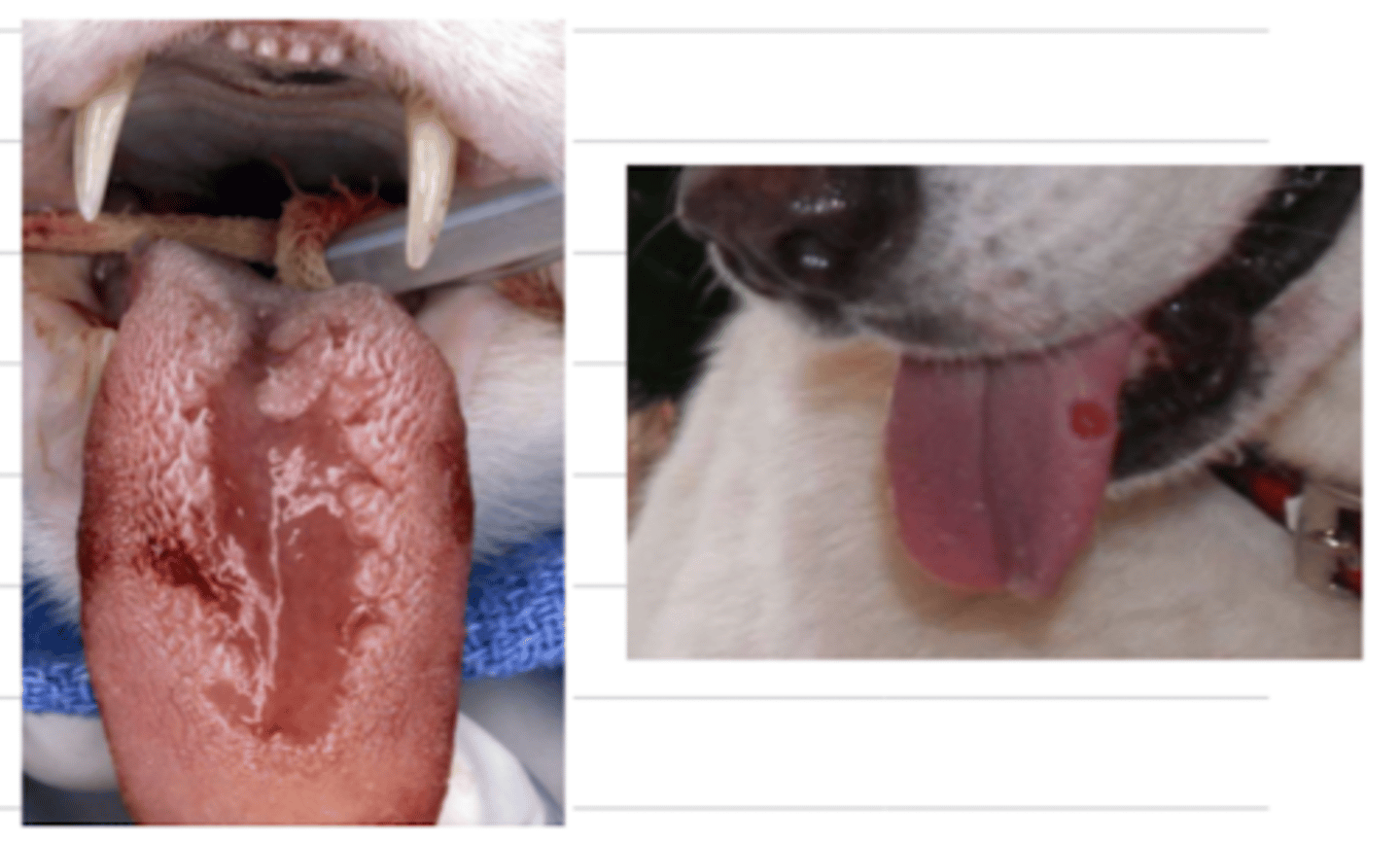
-infectious (Calicivirus, Herpesvirus, etc)
-physical (calculus, foreign bodies, etc)
-chemical agents
-metabolic disease
-electric burns
-insects
what might be possible etiologies of glossitis?
pine processionary caterpillars- dogs commonly lick them, and they damage their oral cavity, commonly causing glossitis
what are these? what problem do they commonly cause in the animal?
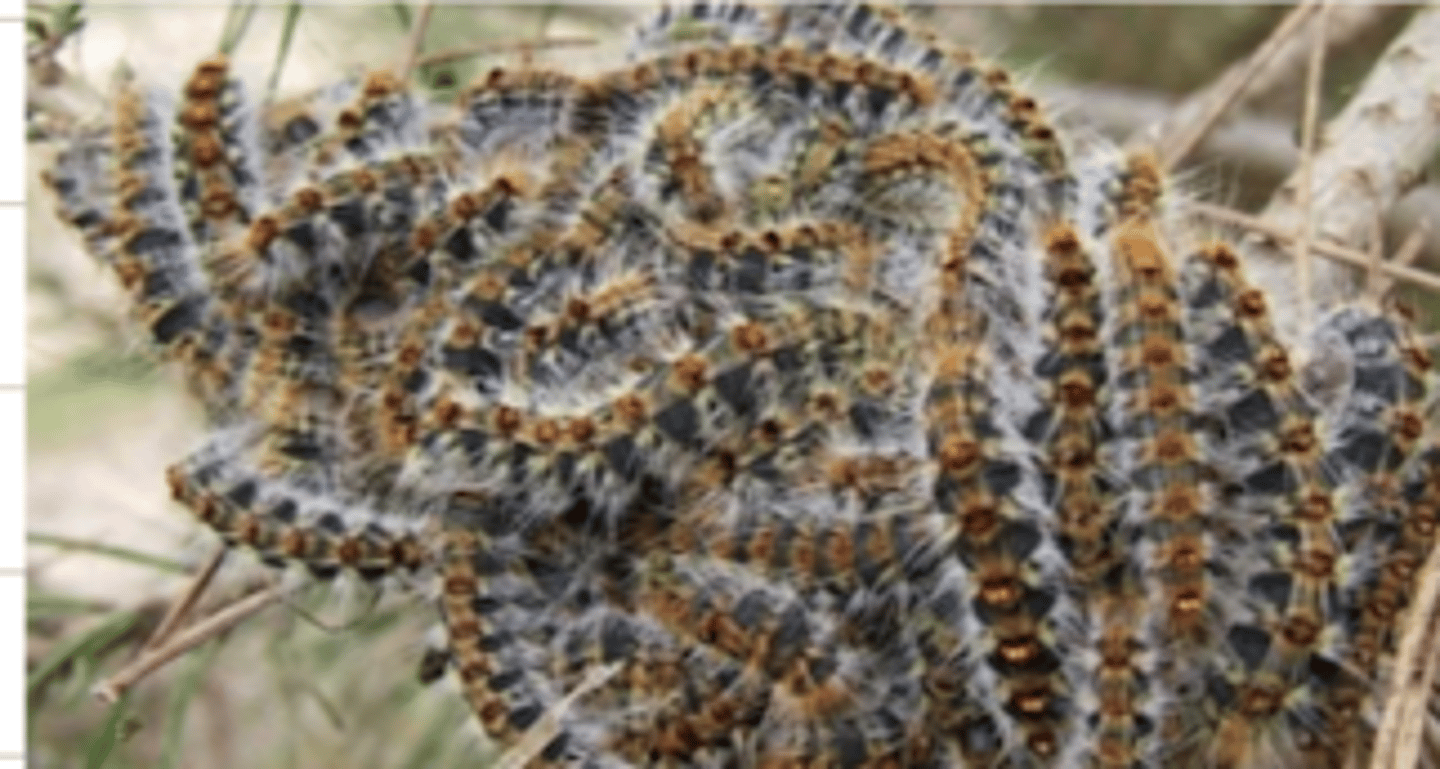
tartar
what is the common etiology of gingivitis in dogs?
gingivitis
small dogs commonly have _______ because of tartar
viral infection: lymphocytic/plasmacytic due to Calicivirus, FIV, or FeLV
what is the most common etiology of gingivitis in cats?
tartar; viral infection
in dogs, gingivitis is usually caused by _________, but in cats, it is usually caused by ___________
gingivitis (due to tartar)
what problem does this dog have?

gingivitis; viral infection
what is the medical term for the condition of this cat? what is likely the etiology?
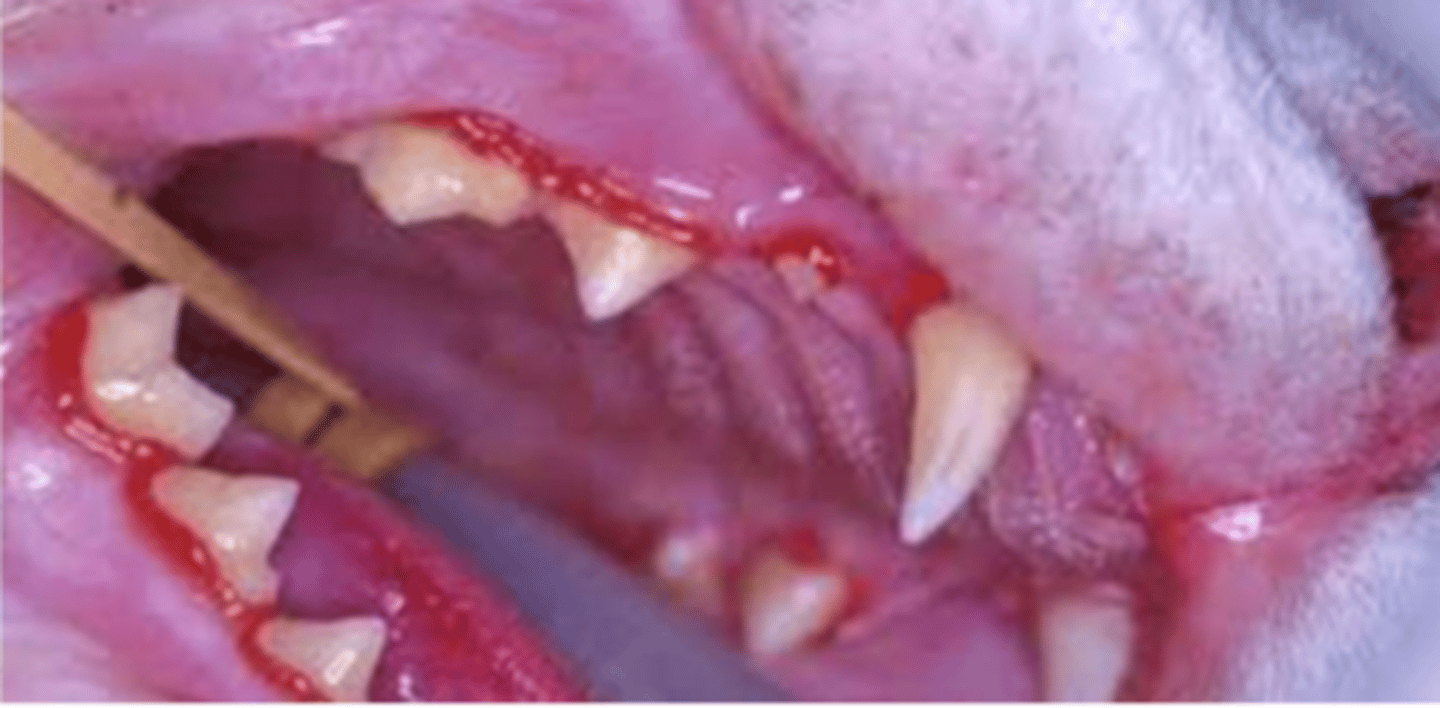
saint bernards, springer spaniels, bulldogs
(dogs with droopy cheeks)
what dog breeds are predisposed to cheilitis?
-poor oral hygiene
-inflammation of adjacent tissues
-chewing sharp objects/ foreign bodies
what can cause cheilitis?
cheilitis
what is the medical tern for the condition of this dog?
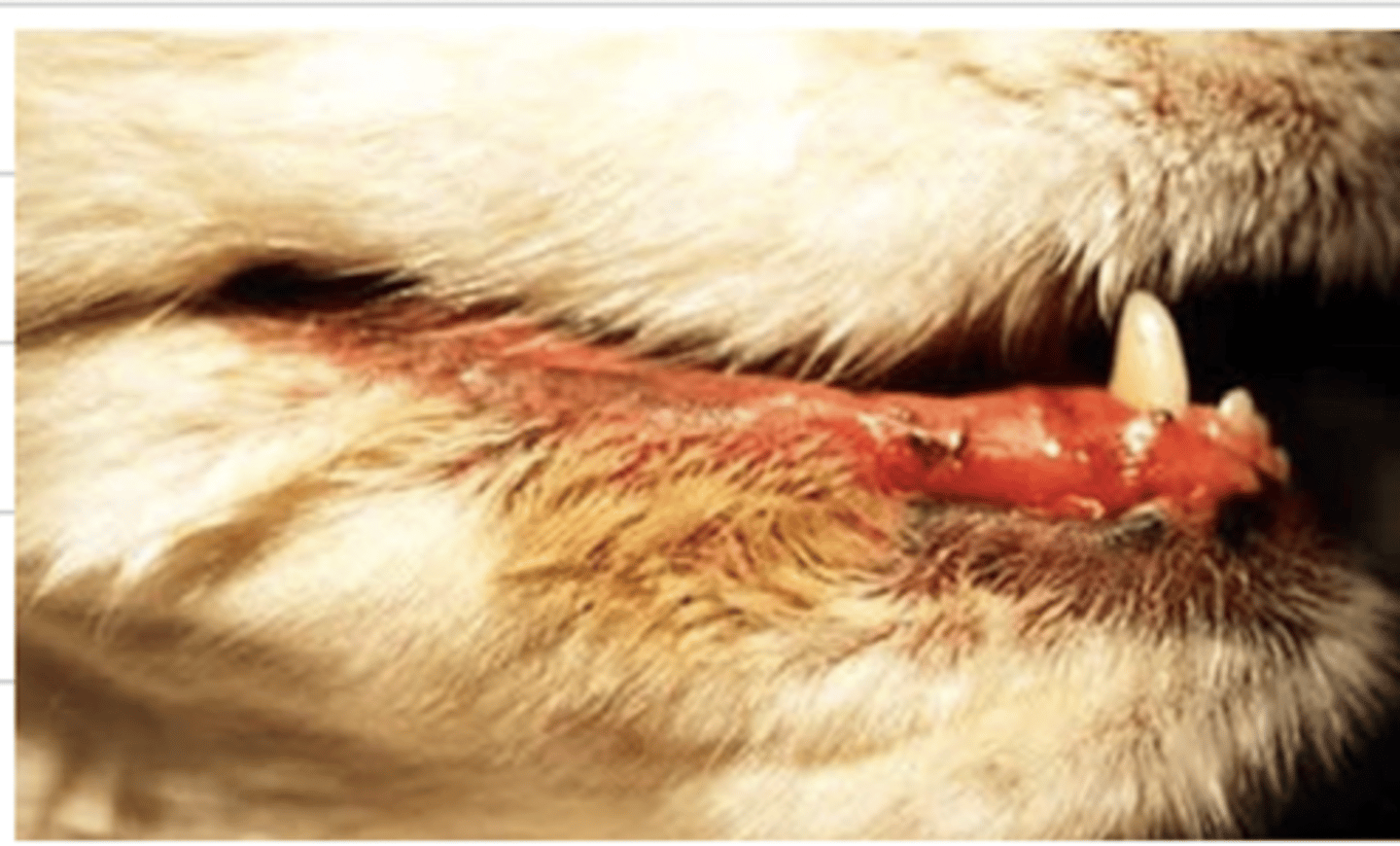
cheilitis
what does this dog have wrong?
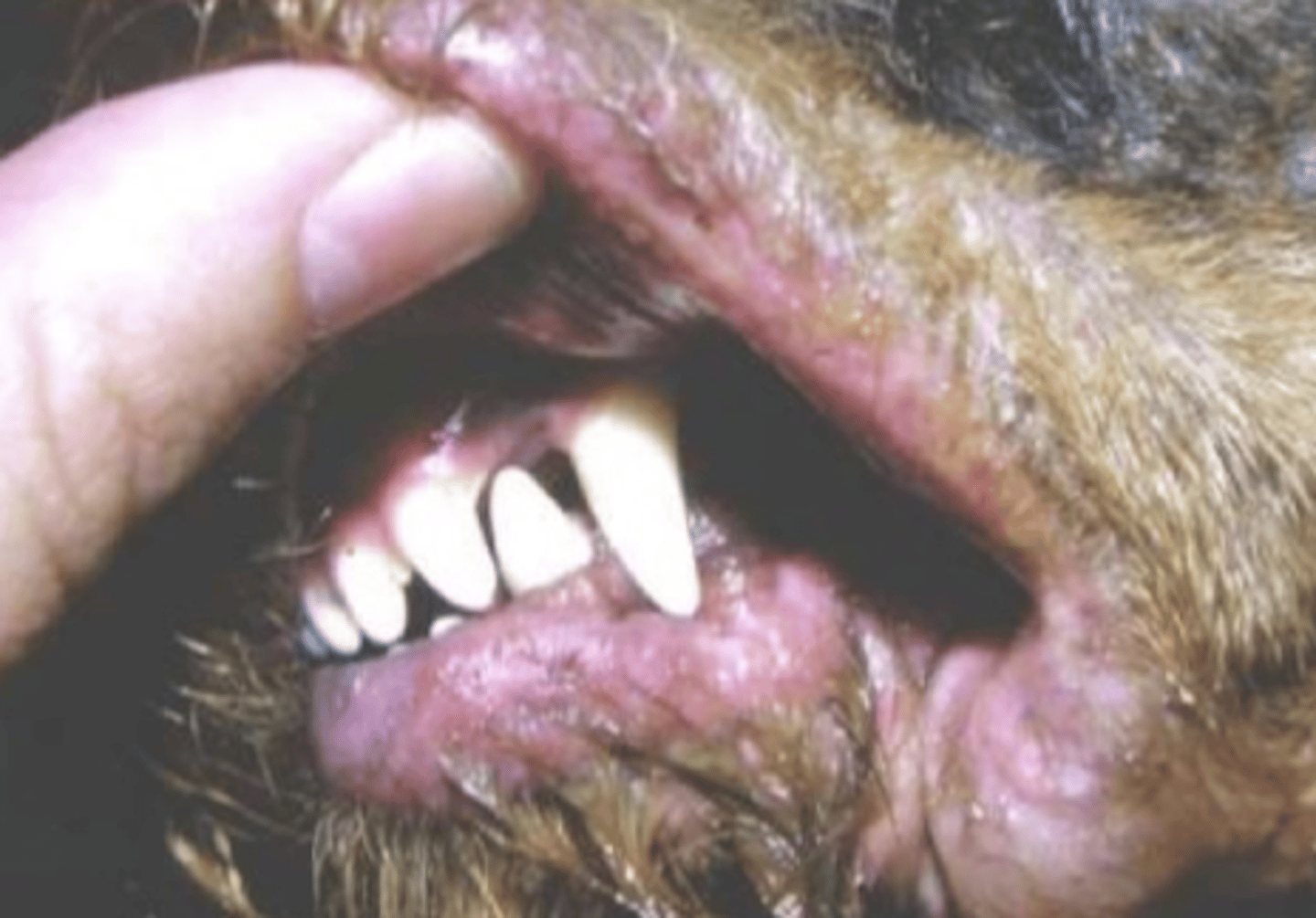
NO, the only cases are caused by Candida albicans (fungi)
is stomatitis common in dogs?
cats
we see the most cases of stomatitis in what species?
-gingivitis
-eosinophilic granuloma
-immune-mediated
-virus (Calicivirus, Herpesvirus, FIV, FeLV)
-food allergy
-Candida albicans
-Mycoplasma
-metabolic disease
-neoplasia
-nutritional disorder
-trauma
-foreign bodies
what are the possible causes of stomatitis in cats?
stomatitis
what does this cat have?
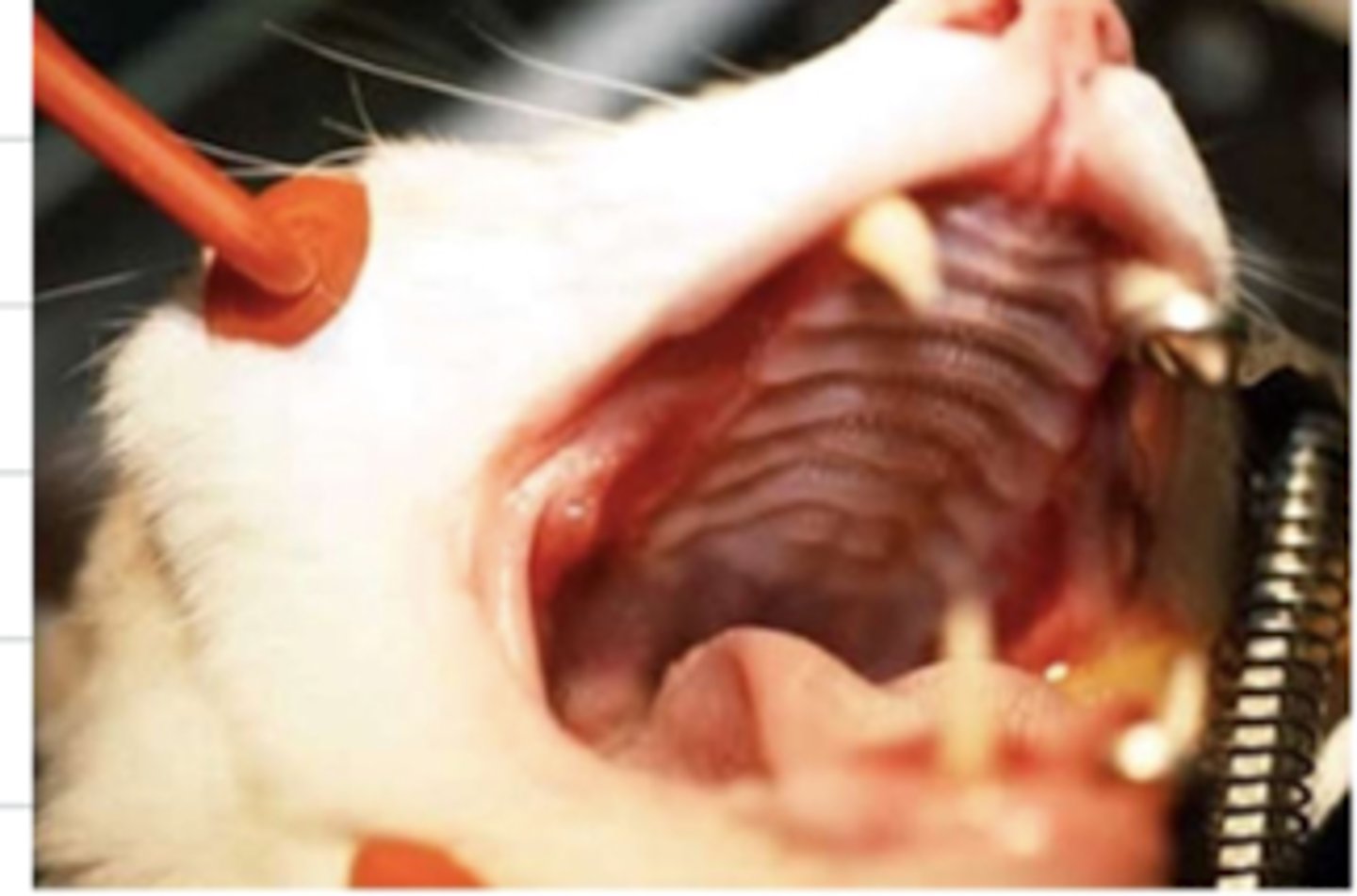
stomatitis
this cat has what condition?

the inflammation of the mucosa at the lateral and caudal walls of the mouth/pharynx
what is faucitis?
faucitis
the most severe and painful inflammation in the oral cavity is ....
Feline Odontoclastic Resorptive Lesion
the bones surrounding the teeth are reabsorbed and the teeth move around, causing a lot of pain
what is FORL?
FORL- Feline Odontoclastic Resorptive Lesion
what condition does this cat have?
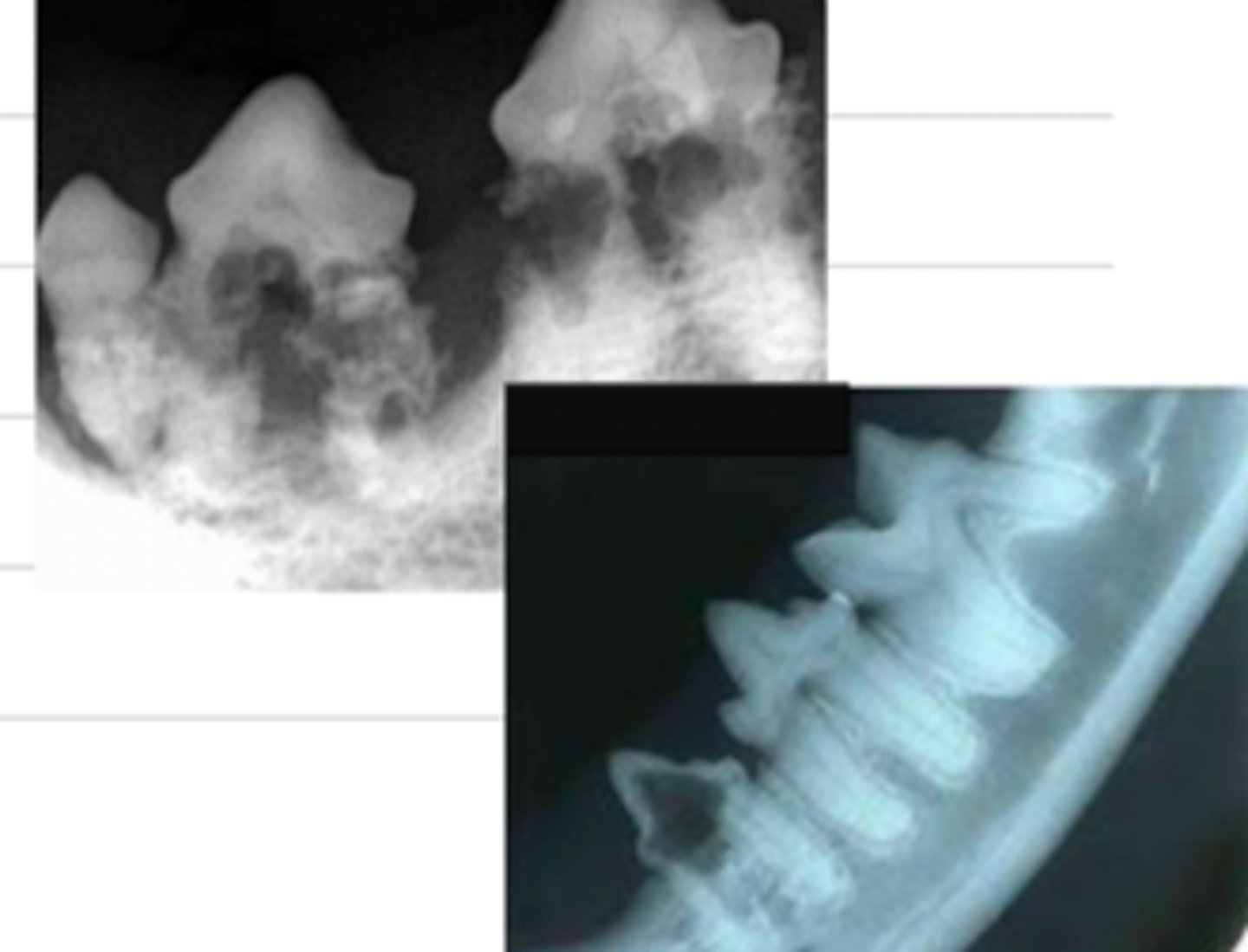
faucitis
what condition does this cat have?

-peridontal disease
-enamel disease
-dental/skeletal maloclusions
-abnormal number of teeth
what are the different dental disorders that we commonly see in veterinary medicine?
the infection and inflammation of the peridontum (tissues surrounding and supporting the teeth) due to plaque and the host's response to bacterial insult
what is peridontal disease?
poor dental hygiene
because of this, the plaque thickens, which causes an imbalance of the bacterial population, which induces an inflammatory response that leads to peridontal and bone damage
what causes peridontal disease?
peridontal disease
what is this condition?
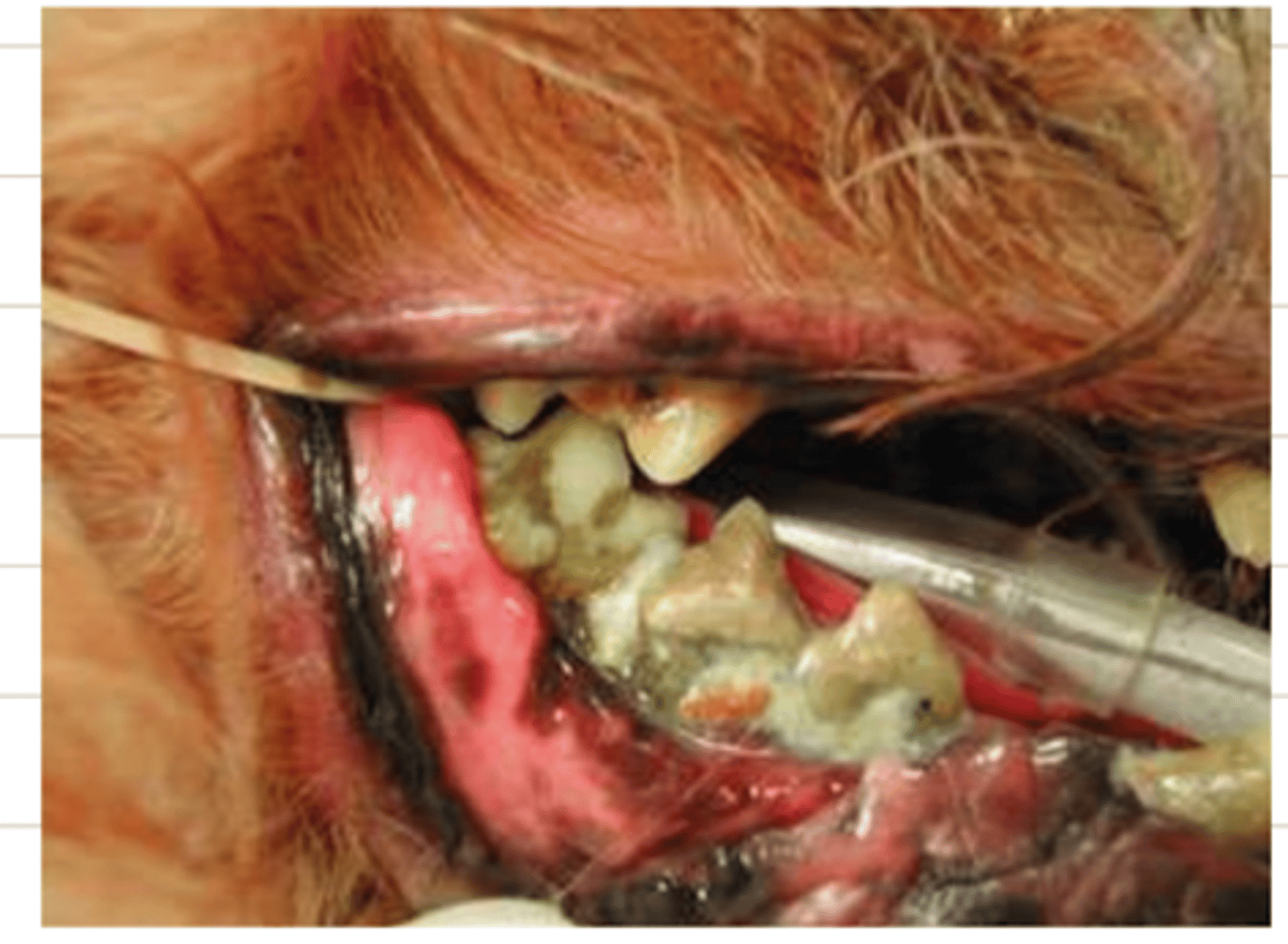
peridontal
this horse has ________ disease

peridontal disease
what is the problem here?
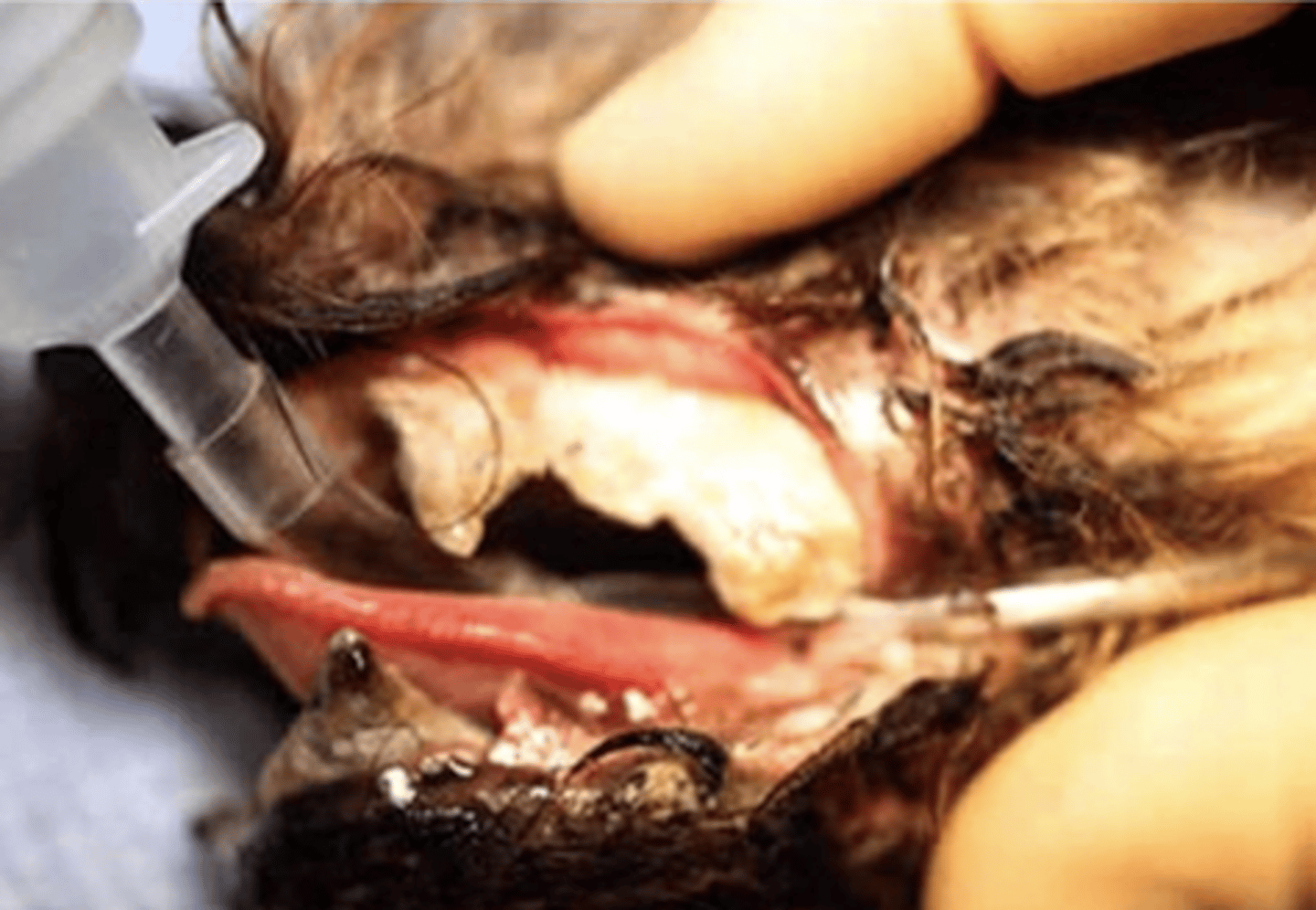
not serious or painful at all
how serious is an enamel disorder?
-trauma
-chemical product deposition
-canine distemper virus
-fever
-inherited (in huskies)
what causes enamel disorders in animals?
enamel problem/disorder
what is the problem?
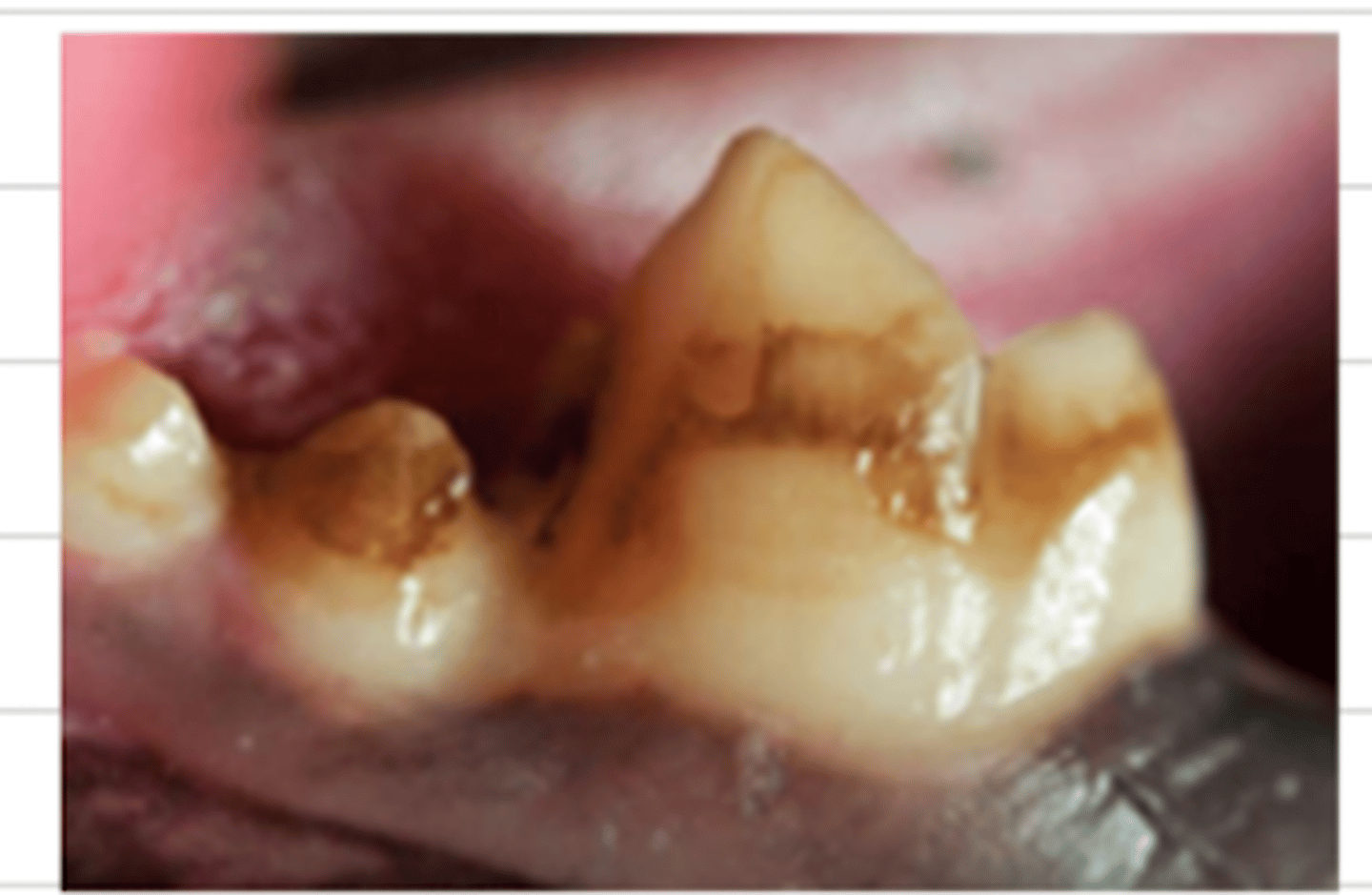
enamel
this dog has an issue with its ______
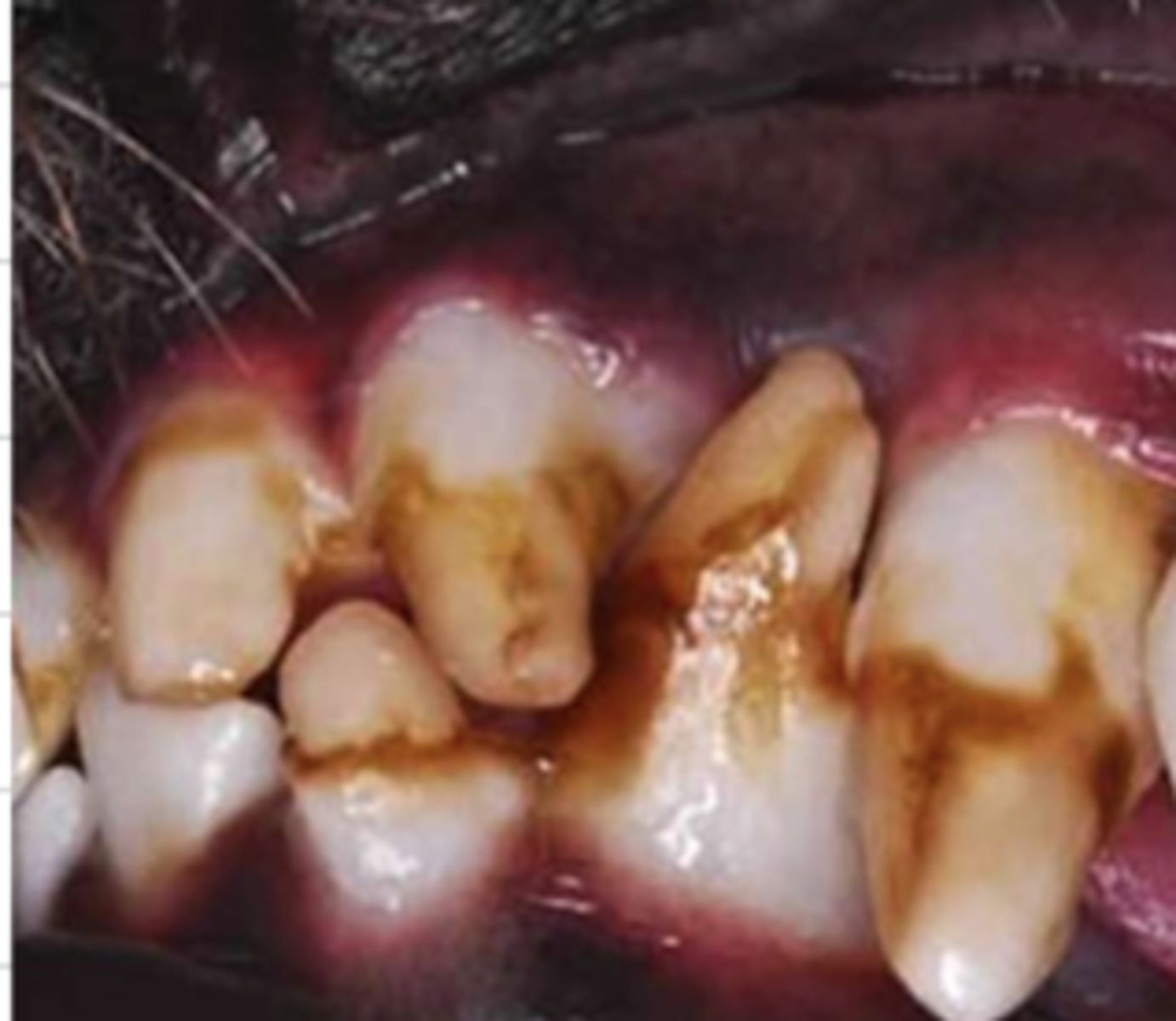
enamel;
trauma, chemical product deposition, canine distemper virus, fever, inherited
these characteristic brown marks on the teeth indicate a problem with the ______, which can be caused by _____
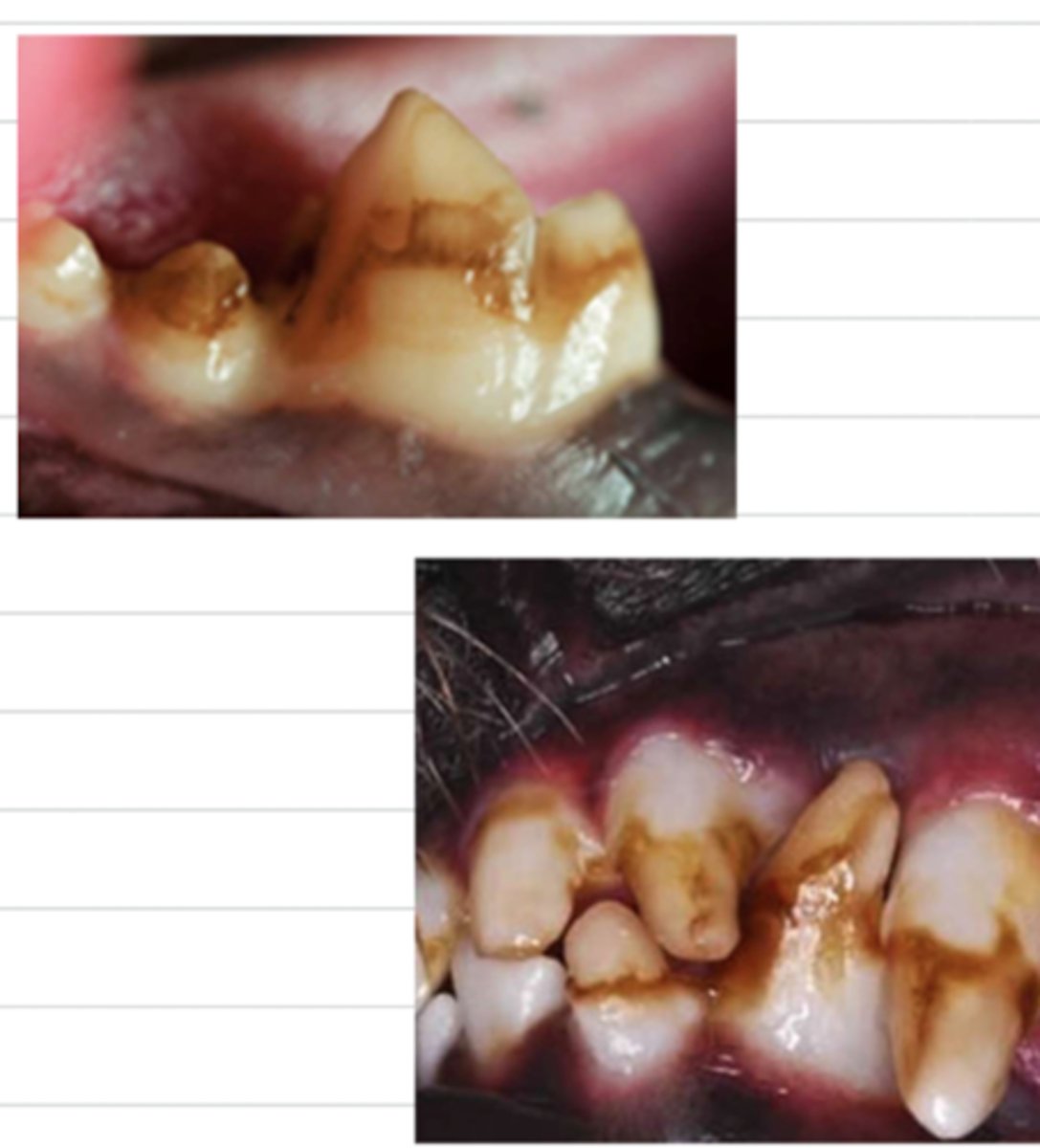
it is usually unproblematic, and is just an aesthetic (appearance) issue.
how serious is a dental/skeletal malocclusion?
dogs
dental/skeletal malocclusions occur more commonly in what species?
trauma or it is inherited
what may cause dental/skeletal malocclusion?
shark mouth.
it is a dental malocclusion. we just need to remove the milk teeth that have not fallen out.
we call this ....
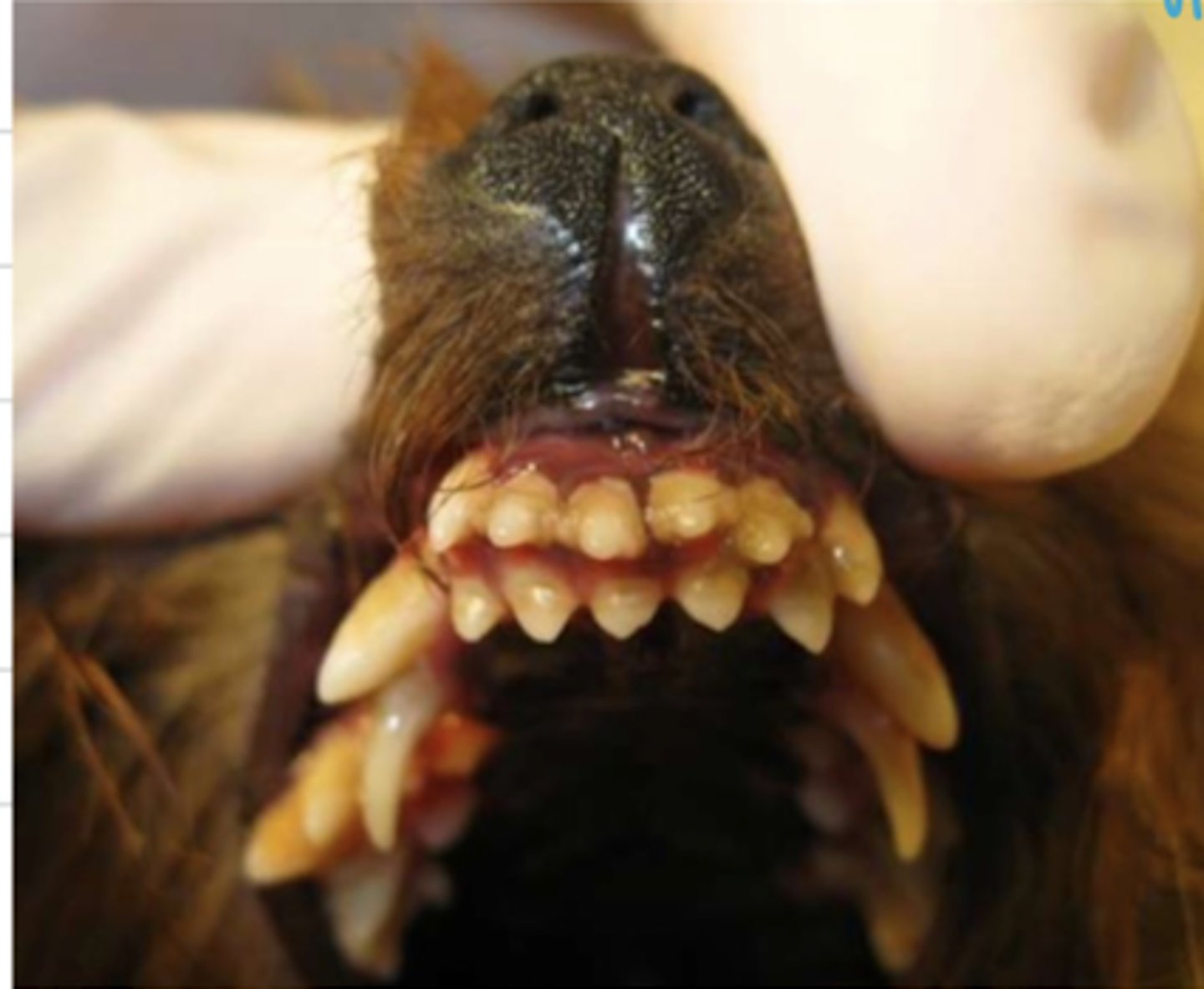
dental/skeletal malocclusions
these issues are called .....

old- they are very rare in young animals
are neoplasias of the oral cavity more common in young or old animals?
-malignant melanoma
-squamous cell carcinoma
-fibrosarcoma
what are the different types of oral cavity neoplasias that are common in dogs?
dogs
malignant melanomas in the oral cavity are very common in what animals?
cats
squamous cell carcinomas in the oral cavity are very common in what animals?
squamous cell carcinoma
what is the most common neoplasia in the oral cavity of cats?
squamous cell carcinoma
fibrosarcoma
what are the common 2 neoplasias that we can find in the mouth of a cat?
malignant melanoma
it is very aggressive and painful, and is the most common neoplasia in the mouth of dogs
what is this?
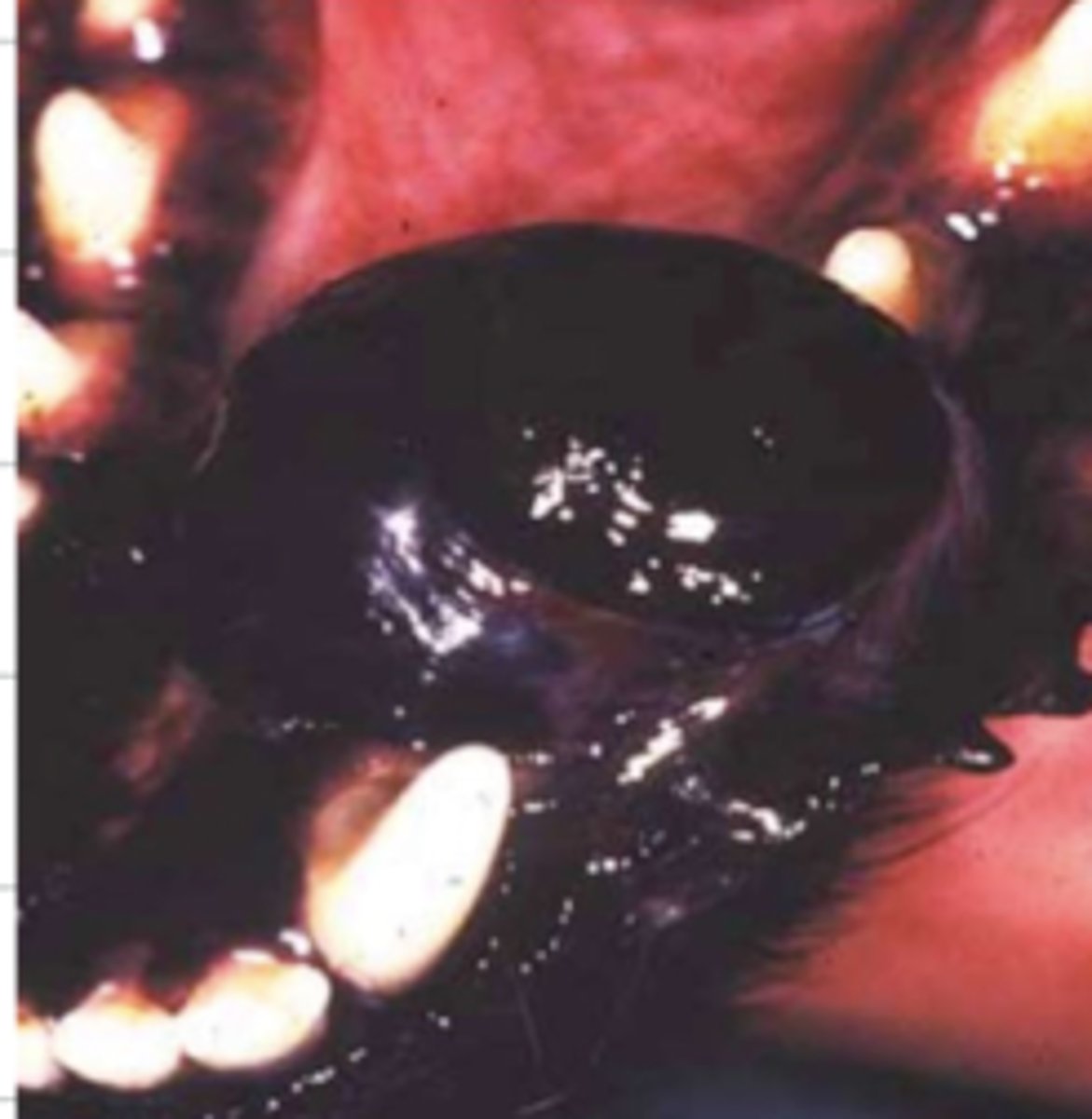
"lock jaw"- a medical condition in which the normal motion of the mandible is reduced
what is mandibular trismus?
-temporomandibular anguilosis (fracture)
-temporomandibular osteoarthritis
-masticatory muscle myositis
-neoplasms
-neurological lesions (due to tetanus, canine distemper)
-retrobulbar abscess
what are the possible causes of mandibular trismus?
tetanus
these puppies have mandibular trismus due to .....
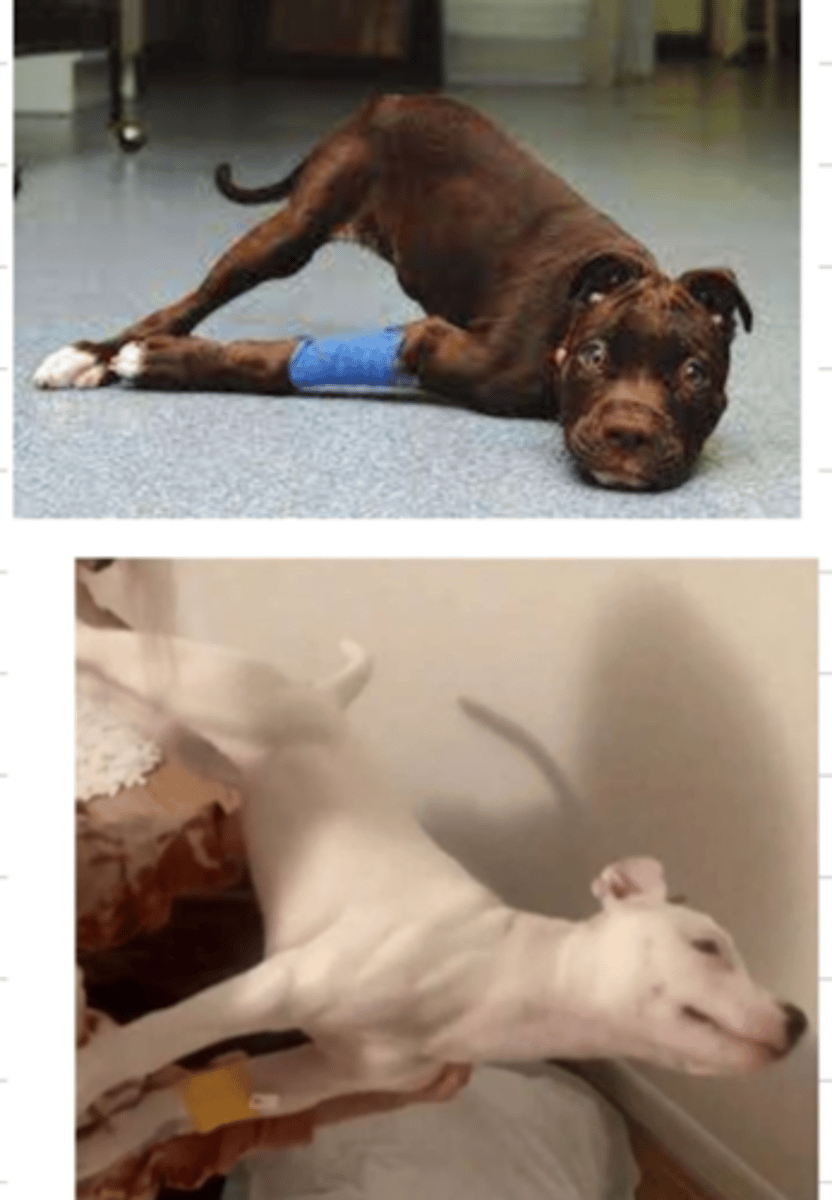
weight loss and dehydration
because the animal avoids eating and drinking (hypo/anorexia, hypodypsia)
what are the main symptoms of prehension disorders?
improper chewing of food; decreased surface area for digestive enzyme action
a chewing disorder is the _______, resulting in ________
-oral inflammation (gingivitis, stomatitis, etc)
-dental disorders (peridontal disease, etc)
what are the 2 etiologies of chewing disorders? (what might cause an animal to have trouble chewing its food?)
-undigested food in the feces
-ptyalism
-halitosis
-weightloss and weakness
-diarrhea (bc the food is not chewed, so the osmotic pressure in the intestine is increased, and water is not absorbed)
if an animal has a chewing disorder, what symptoms might we see?
because if the food is not properly chewed, the osmotic pressure in the intestine will be increased, and water will not be absorbed
why might a dog that has a chewing disorder have diarrhea?
parotid
zygomatic
sublingual
mandibular
the four main salivary glands are.....
the swelling of a salivary gland as a consequence of saliva accumulation
what is a mucocele/sialocele?
mucocele/sialocele
the swelling of a salivary gland because of saliva accumulation is called.....
inflammation of a salivary gland due to obstruction or sialoliths
what is sialodenitis?
sialodenitis
the inflammation of a salivary gland is called....
sialoliths (salivary stones) within the salivary gland
what is sialolithiasis?
a mucocele/sialocele
if we observe a mass below an animal's mandible, and when we feel it it is soft, mobile, and not hot or painful, we can assume it is....
soft, mobile, not hot, not painful
how does a mucocele/sialocele feel?
mucocele/sialocele
what is wrong with this animal?

mucocele/sialocele
what does this animal have?
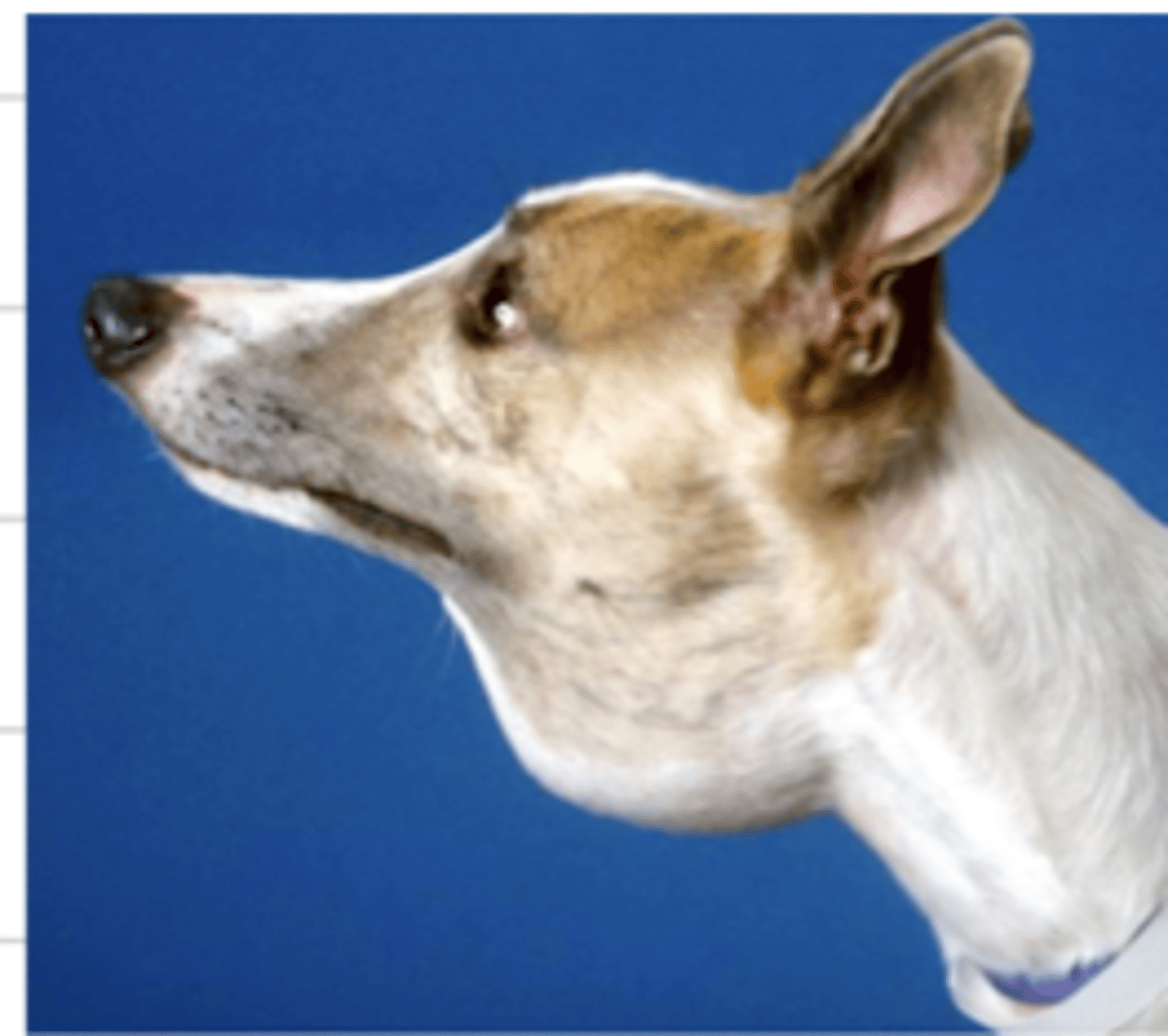
a mucocele/sialocele of the sublingual gland
what is a ranula?
prehension and mastication problems
if there is a mucocele/sialocele of the sublingual gland (ranula), what issues will we see in the dog?
dysphagia
if there is a mucocele/sialocele of the submandibular gland, what issues will we see in the dog?
exophtalmus, difficulty opening the jaw
if there is a mucocele/sialocele of the zygomatic gland, what issues will we see in the dog?
a ranula (mucocele/sialocele of the sublingual salivary gland)
what is this?

not serious.
it is not painful or limiting, but if very very big, can cause issues.
how serious is a mucocele/sialocele?
parotid
sialodenitis is most common of what gland?
parotid
which salivary gland is most commonly inflamed?
horses
in what species is sialodenitis common?
hot, painful
how does sialodenitis feel?
-wounds
-systemic infections (ex: S. equi)
-sialoliths
what are the common causes of sialodenitis?
sialodenitis (of the parotid)
what is wrong with this horse?
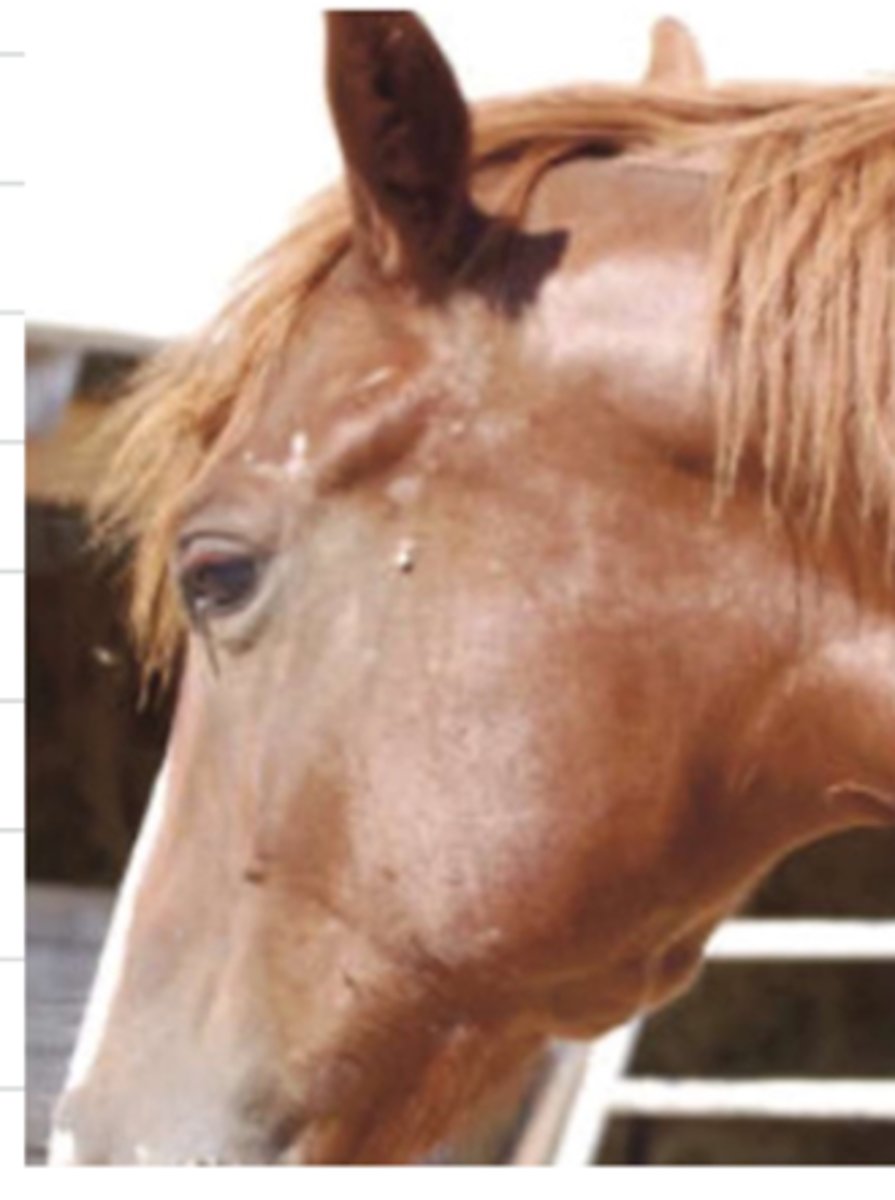
-painful, hot, hard mass
-difficulty swallowing
-inappetance
what are the symptoms of an animal with sialodenitis?
sialodenitis
a horse has a painful, hard, and hot mass on its temple. it is having dysphagia and does not want to eat. what probably is the issue?
sialolith- a salivary gland stone
in the middle, it is a vegetable that has accumulated calcium carbonate around it
what is this?
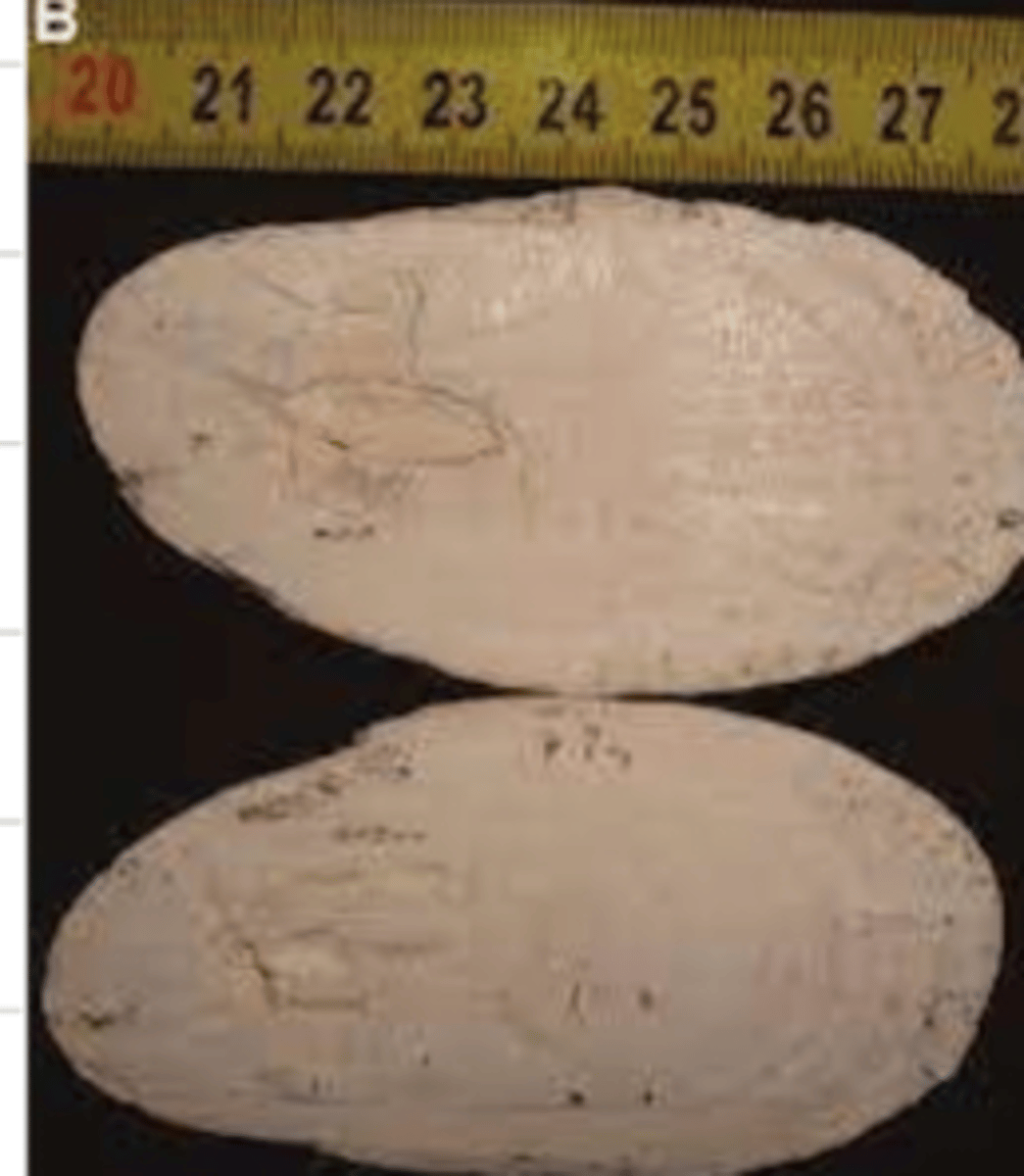
it occurs when a piece of food gets stuck and then calcium carbonate deposits and accumulates around it. it might also be caused by the desquamation of cells
why might a horse have sialolithiasis?